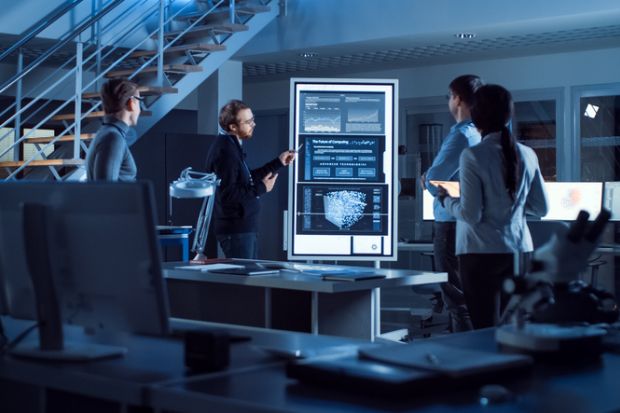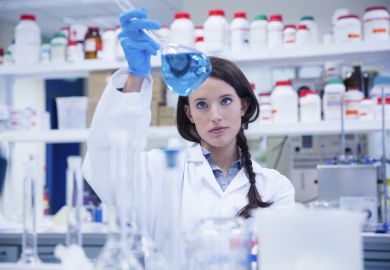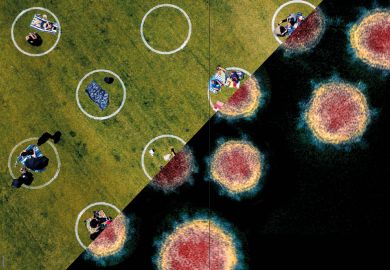Academia can be a fantastic environment in which to work and study, but it is not always without stress. The ever-increasing demands on your time can seem overwhelming amid expectations of achieving the right metrics, being successful and developing cutting-edge, world-leading research projects in time frames compatible with doctoral projects, postdoctoral contracts or Research Excellence Framework cycles.
These pressures are only compounded by the drive to publish, scarcity of funding and the complexity of research projects. So how can a team thrive in these conditions? This is a question that I’ve been trying to answer for almost 20 years. Here are the top 10 tips that work for us.
- Openness is vital. We openly try to succeed and often fail. We have an open server with all our data, manuscripts and grants (including referee reports) since the group started in the year 2000. Luckily, the growth of server capacity has been keeping pace with the growth of my team (and its now 250-plus alumni). The server has SIX redundant backups that I maintain personally, including one set of off-site servers and a 16 TB “mobile” version.
- We have a group wiki that lists the tips, tricks, resources, group meetings, responsibilities and current papers in progress. New ideas are also given a folder on the server for all to see and comment within. Collaborative working is encouraged, and people often work together in real time to solve problems, develop new ideas and share best practice.
- Every member of the group is in a team and subgroup, both of which have designated leaders. The team is about research progress, the subgroup is about professional development. Teams all check in at least once a week, and I meet with everyone one-to-one at least once per month. I respond to emails and Slack messages from my team within 24 hours on average and often try to set well-defined feedback delivery times. Because my server also syncs our manuscripts folder to my personal Dropbox, I’m able to help and feed back in real time from anywhere in the world.
- For the subgroup meetings every two months, everyone produces a one-page-summary (OPS) of their tasks, ideas, manuscripts, collaborations, problems and training needs. Each time, they list how many months they have left in the group: this is a brilliant self-management tool. It can be used to track progress and tasks, and it puts the individual in control of their personal development.
- The subgroup discussions focus on individual needs, training and personal goals. We often share frustrations and reflections on the realities of research. We also present some slides about personal research progress and new ideas. All these slides and OPSs are stored on the server forever as this helps track individual contributions, informing later credit assignment and IP ownership. It also helps me remember the technical contributions of the group members.
- Team meetings focus on research progress and often concentrate on addressing a specific goal or exploring new ideas in a critical and playful way. We identify resource constraints and acknowledge the fact that reality does not “allow” our idea to work sometimes.
- The group has core hours between 10am and 4pm to allow for flexibility, but we encourage people to be consistent in attendance because it allows us to spot motivation problems and have ad hoc brainstorms and “flash mob” research workshops. Consistency allows planning, help and collaboration.
- Credit disputes are resolved openly where possible, but people who are shy often talk to me confidentially. I then try to come to accommodations that everyone agrees with and have a mechanism to keep iterating until everyone is happy (or as happy as possible).
- The first thing I ask new people when they join us is what they might do when they leave. This way, I can start helping mentor them toward their goals – although they often revise them. I also ask new people, roughly after one month, what they would change about the group and what they like about the team. This allows us to constantly review and revise our processes.
- Constructive critical feedback is vital and must be given sensitively. I think it is damaging if you are not honest with someone when they are not achieving the standard you think is needed. Silence prevents them getting further training, thinking critically about the issues, and generally planning for better support. As the group leader, I aim to be always as honest and direct as possible. However, I can be, and am often wrong, especially in technical discussions. I try to work to get the all the voices in the room heard. I also have some strong opinions that can be overturned in about a millisecond once I’ve had time to think.
The bottom line in the development of the best research culture is to have open discussions, often on hard topics, and to develop a culture of critical but playful thinking that allows people to challenge and be challenged.
It is also vital to ensure the environment is safe, so that team members are not intimidated by each other. Cutting-edge science is intimidating and hard enough, but when we explore together and support each other it is the most rewarding thing in the world.
Lee Cronin is Regius Chair of Chemistry at the University of Glasgow.
Register to continue
Why register?
- Registration is free and only takes a moment
- Once registered, you can read 3 articles a month
- Sign up for our newsletter
Subscribe
Or subscribe for unlimited access to:
- Unlimited access to news, views, insights & reviews
- Digital editions
- Digital access to THE’s university and college rankings analysis
Already registered or a current subscriber?








